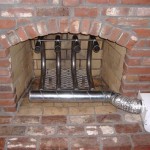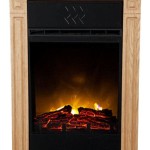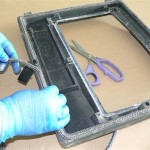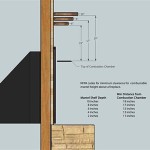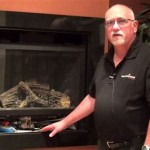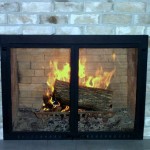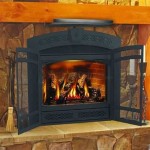```html
My Gas Fireplace Sets Off Fire Alarm: Understanding the Causes and Solutions
Gas fireplaces offer a convenient and aesthetically pleasing way to heat a home. However, a common and potentially alarming issue is the activation of the fire alarm when the fireplace is in use. This phenomenon can be disruptive and cause unnecessary stress. Understanding the underlying causes and potential solutions is crucial for ensuring the safe and enjoyable operation of a gas fireplace.
Fire alarms are designed to detect smoke and, in some cases, rapid temperature increases, signaling a potential fire hazard. When a gas fireplace triggers a fire alarm, it signifies that the alarm's sensors are detecting something that resembles a fire. The key is to identify what specifically is activating the alarm and address the root cause.
Poor Ventilation and Combustion Byproducts
One of the primary reasons a gas fireplace sets off a fire alarm is inadequate ventilation. Gas fireplaces, like any combustion appliance, produce byproducts such as carbon dioxide, water vapor, and trace amounts of other gases. A properly functioning fireplace vents these byproducts safely outside the home through a designated flue or vent system. If the ventilation system is obstructed, damaged, or improperly installed, these combustion byproducts can accumulate in the living space.
Smoke detectors, especially photoelectric models, are sensitive to airborne particles, including those present in combustion byproducts. Even small amounts of these particles can be enough to trigger an alarm. If the flue is blocked by debris, such as leaves, bird nests, or fallen insulation, the combustion gases will be forced back into the room. Similarly, a damaged or corroded flue pipe can leak these gases into the surrounding areas, eventually reaching the fire alarm.
Furthermore, improper combustion within the fireplace itself can lead to the production of excessive smoke and soot. This can occur if the gas-to-air mixture is not correctly balanced, resulting in incomplete burning of the gas. Factors contributing to this imbalance include dirty burners, insufficient gas pressure, or a malfunctioning air shutter. The resulting smoke will activate the fire alarm, indicating a potentially unsafe condition.
To address ventilation issues, a professional inspection of the flue and venting system is essential. This inspection should include a thorough cleaning to remove any obstructions and an assessment of the flue's structural integrity. Also, ensure the gas fireplace is serviced regularly to ensure optimal combustion and reduce byproduct production.
Proximity and Sensitivity of the Fire Alarm
The placement of the fire alarm in relation to the gas fireplace plays a significant role in its likelihood of being triggered. If a fire alarm is located too close to the fireplace, it may be more susceptible to detecting heat or combustion byproducts even under normal operating conditions. The heat rising from the fireplace, combined with the presence of minute amounts of gases, can be enough to exceed the alarm's threshold for activation.
Another factor to consider is the type and sensitivity of the fire alarm itself. Ionization smoke detectors are generally more sensitive to small particles of smoke produced by fast-burning fires, while photoelectric smoke detectors are more responsive to larger particles, such as those produced by smoldering fires. While both types of detectors are effective, the sensitivity of an ionization detector might lead to more frequent false alarms in the presence of a gas fireplace, especially if the fireplace produces even a slight amount of smoke or combustion byproducts.
Furthermore, some fire alarms have adjustable sensitivity settings. If the alarm is set to a highly sensitive level, it may be more prone to false alarms from even minor environmental changes. Adjusting the sensitivity setting to a slightly lower level might reduce the frequency of alarms triggered by the fireplace, but it's crucial to ensure that the alarm remains effective at detecting genuine fire hazards. Consult the manufacturer's instructions for guidance on adjusting the sensitivity settings.
Relocating the fire alarm to a more appropriate distance from the fireplace can also be a solution. The National Fire Protection Association (NFPA) provides guidelines for fire alarm placement, recommending that alarms be installed on ceilings or high on walls and away from cooking appliances and other sources of combustion. Following these guidelines can help minimize the risk of false alarms caused by the gas fireplace.
Dust and Debris Accumulation
Over time, dust and debris can accumulate on the surfaces of the fireplace, including the logs, burners, and interior walls. When the fireplace is turned on, this accumulated dust and debris can be heated and vaporized, releasing particles into the air that may trigger the fire alarm. The process is similar to the initial burn-off of a new appliance, where residual manufacturing oils or dust can create a temporary odor and smoke.
Moreover, spider webs and other small insect nests can build up within the fireplace, particularly in areas that are not easily accessible. When the fireplace is activated, these webs and nests can burn, producing smoke that easily triggers a nearby fire alarm. Regular cleaning of the fireplace is essential to prevent the accumulation of dust, debris, and insect nests. This includes vacuuming the interior of the fireplace, wiping down the logs, and cleaning the burner assembly.
Using a soft brush or vacuum attachment to remove loose dust and debris is crucial. Avoid using harsh chemicals or abrasive cleaners, as these can damage the fireplace components. Consult the fireplace manufacturer's instructions for specific cleaning recommendations. Before cleaning, always ensure that the gas supply to the fireplace is turned off and that the fireplace is completely cool.
In addition to cleaning the interior of the fireplace, regular cleaning of the room itself can help reduce the amount of dust and debris circulating in the air. Dusting furniture, vacuuming carpets, and regularly changing air filters can all contribute to a cleaner environment and reduce the likelihood of the fire alarm being triggered.
```
Reasons Why Your Alarm Is Switching Off Randomly

Can Gas Fireplaces Lead To Carbon Monoxide Poisoning

My Smoke Alarm Is Chiming What Does It Mean The Longmont Leader

Will Burning An Incense Stick Set Off A Smoke Detector Quora

Carbon Monoxide Detector Going Off Here S What To Do Next Vivint

What Would Set Off A Carbon Monoxide Detector Heartland Heating Air
How Thick Must Smoke Without A Fire Be To Set Off The Alarm Quora
Why Is My Heater Setting Fire Alarm Off Quora

Smoke Detector Repair Services In Atlanta Ga

How To Install Hardwired Smoke Detector Step By Forbes Home

